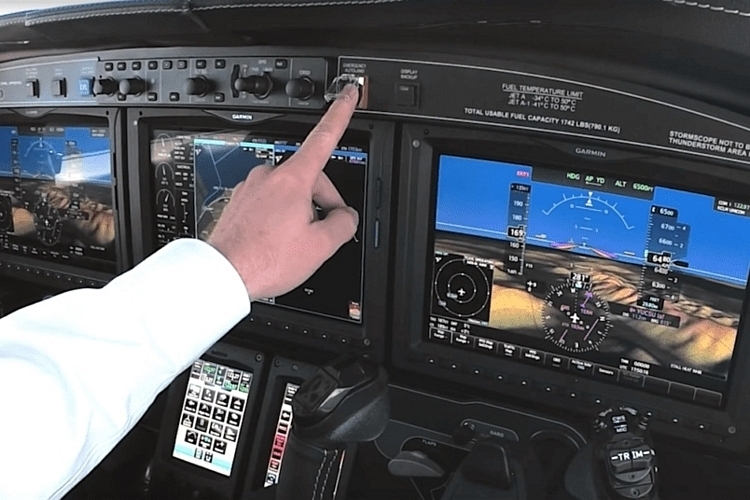
Many commercial aircrafts now have automated systems for both flight and landing. So far, though, it’s a system that’s only been implemented in large, commercial airplanes. The Garmin Autoland changes that.
Yes, the same company that makes the multi-sport GPS watch you wear for workouts, off-grid communicator you bring to the backcountry, and golf swing monitor that tracks your every swing in the fairway now has a device that take control of your private plane, too. No more panicking and trying to remember all the things you did in X-Plane 11 when your pilot has a sudden heart attack – just press a button, let the robots take over, and trust it to land you to safety.

Billed as the first auto-landing system for general aviation aircrafts, the Garmin Autoland is designed to integrate with any airplane equipped with one of Garmin’s G3000 integrated flight deck. During activation, the system calculates a flight plan to the most optimal airport, initiates an approach to the runway, and lands the plane autonomously with zero need for any human intervention. That’s right, all you have to do is sit back and relax. No, it doesn’t simply locate the nearest airport on a map and land the plane on there. Instead, it relies on a more sophisticated algorithm that takes every available parameter into consideration. That includes the current location, weather, amount of fuel in the tank, nearby terrain, and possible obstacles, along with which of the nearby airports is most ideal based on runway length and the availability of a GPS approach with lateral and vertical guidance.
After locating a suitable airport within its range, the system takes charge of an aircraft’s controls, taking it from the current position to the chosen runway, then initiating a controlled descent, extending the landing gear, and finally landing it on the runway. Automatic braking is applied while tracking the runway centerline until the plane hits a full stop, at which point the engine is shut down, allowing passengers to safely exit.

The Garmin Autoland also handles all communication with local air traffic controllers and pilots flying in the vicinity, so everyone is aware of your aircraft, its situation, and its real-time position, ensuring it’s able to navigate safely. To prevent panic, it keeps the plane’s passengers informed of what’s happening the whole time by providing verbal communication in plain language. All flight displays also show the aircraft’s location on a map, alongside information such as the target destination, estimated arrival time, distance to travel, remaining fuel, airspeed, attitude, and heading. Passengers also get the option to communicate with ATC using the touchscreen interface on the flight deck.
It works hand-in-hand with Garmin’s Autothrottle, which automatically manages the aircraft speed, engine performance, and engine power, allowing the plane to descend, climb, or hold altitude as needed. The automated landing, by the way, can be canceled at any time by simply pressing the same activation button, allowing a human pilot to take charge of the plane.

The Garmin Autoland will initially be available as an option on the Cirrus Vision Jet and the Piper M600, although it will likely be available as an aftermarket system, too, at some point going forward.
